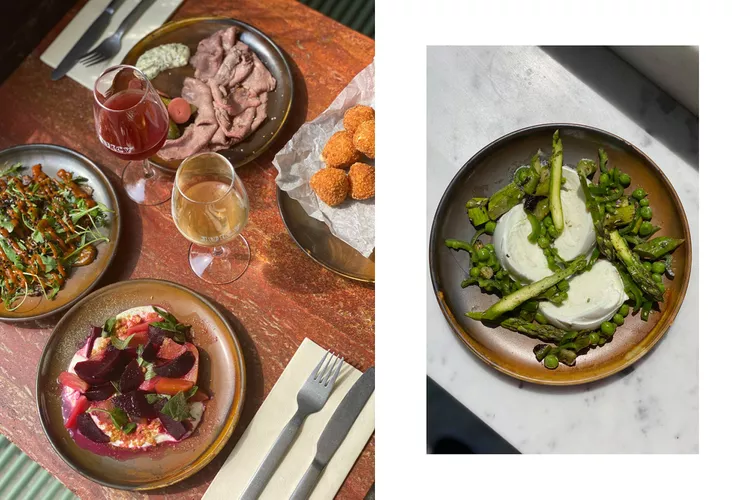1. Evolution of Nice’s Dining Scene
2. Traditional Niçoise Cuisine
3. Modern Culinary Influences
4. Notable Restaurants and Chefs
5. New Dining Ventures in Nice
Nice’s dining scene is evolving as chefs and sommeliers move from capitals like Paris and Rome to collaborate on restaurant concepts or open new outposts.
Stroll through the hodgepodge of pastel-striped stands in Nice’s morning market in the Cours Saleya, and you’ll get a quick overview of Niçoise cuisine: socca, crêpe-thin chickpea flour pancakes sprinkled with pepper; pan bagnat, salade niçoise stuffed between an olive oil–slathered sandwich roll; pissaladière, an anchovy and black olive-topped onion tart.
Moreover, chefs like Alain Ducasse have deconstructed some of these classics, serving up more elevated versions at eateries along the Côte d’Azur. A handful of bistros in Nice’s Old Town have created market-fresh versions of the region’s specialties. As the gateway to the French Riviera, the city is often a stopover en route to Saint-Tropez or on a Mediterranean cruise, allowing diners to quickly check off their list of local specialties to try.
Nearby port cities like Marseille have shifted from signatures like bouillabaisse as young chefs embrace more modern Mediterranean fare inspired by stints around Europe. Consequently, since the pandemic, Nice’s somewhat stagnant dining scene has also started to evolve. Chefs and sommeliers have moved from Paris and Rome to collaborate on new restaurant concepts, giving the French Riviera’s capital the edge needed to measure up to other serious culinary cities around the country.
Chef-owner Guillaume Tran-tu of Mallard spent nearly seven years working for Alain Ducasse’s group of restaurants, including the esteemed Le Louis XV in Monte-Carlo. He launched his own venture in Nice two years ago, offering regionally influenced dishes like barbajuans d’été (Swiss chard and ricotta-stuffed fritters) alongside French classics such as saucisse maison (homemade sausage) and vol-au-vent au ris de veau (sweetbread-stuffed puff pastry). “Diners want to rediscover or revisit these dishes in a setting that feels like home,” states Tran-tu.
Near the Corsica ferry dock, the duo from Rome recreated their former bistro, Epiro, serving homemade pasta and Italian wine. Additionally, Pernille Stubbs, a Copenhagen native who left Michelin-starred Septime in Paris, moved to Nice to manage the natural wine program at Babel Babel. This Mediterranean-inspired restaurant and bar on the Promenade des Anglais will soon curate a European wine selection at its new bar à vin, Barrique, opening in an old theater in Vieux Nice this summer.
Furthermore, Paris-based Amour Hotels has opened its first boutique hotel outside the capital behind the Promenade des Anglais, complete with a rooftop pool and beach club. Their wine program, created by natural wine superstar sommelier Vanessa Massé, enhances the culinary experience at Nice’s Michelin-starred Pure & V, helmed by Pinja Paakkonen, the former pastry chef of Copenhagen’s theatrical eatery Alchemist.
After selling Le Bistro du Fromager in Nice’s Old Town, Hugo Loubert moved to a former laundromat with his brother, Grégoire, in 2019. Wanting something entirely different, he launched Lavomatique, a small plate–focused eatery noted for its falafels and ribs du cochon, which inspired other unique dining spots like Vietnamese café Banh Meï.
Lastly, Renaud Châteauguiron, a former sommelier at natural wine-focused Clown Bar in Paris, partnered with Banh Meï’s owner, Thi-Hieu Nguyen (also known as “You”), two years ago. They transformed a decade-old eatery known for street food-style sandwiches and salads into a cave à manger, a wine bar with small plates. “Being in Nice presents opportunities to educate patrons about these wines and winemakers, who are our friends,” shares Châteauguiron. They curate a selection of natural sakes and wines from pioneering winemakers in the Bugey region, making the experience reminiscent of Paris a decade ago, which is exciting for the team.




